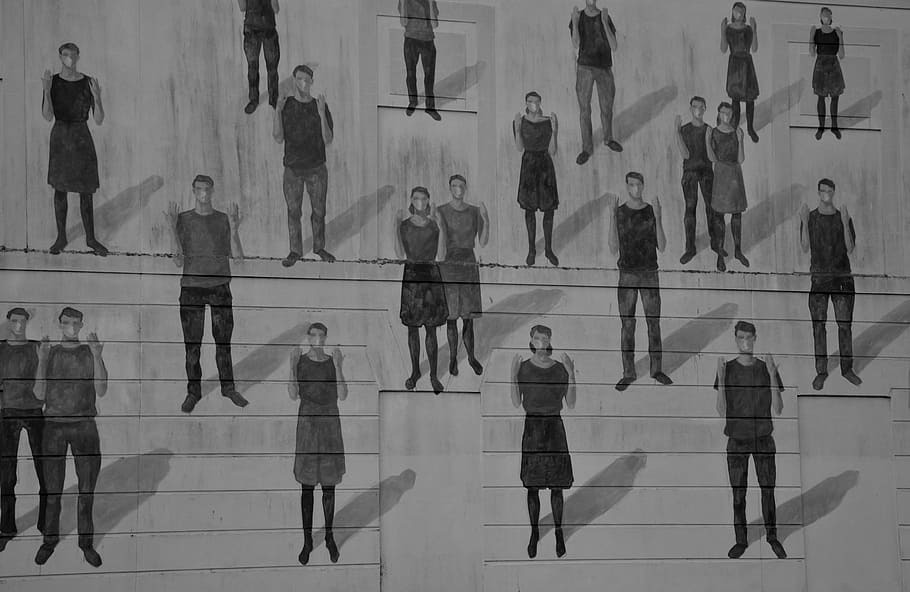Time is not to be trusted. This should come as news to no one.
Yet recent times have left people feeling betrayed that the reliable metronome laying down the beat of their lives has, in a word, gone bonkers. Time sulked and slipped away, or slogged to a stop, rushing ahead or hanging back unaccountably; it no longer came in tidy lumps clearly clustered in well-defined categories: past, present, future.
“Time doesn’t make sense anymore,” a redditor lately lamented. “It feels quicker. Days, weeks, months it’s going by at 2x speed.” Hundreds agreed—and blamed the pandemic.
I’m surprised anyone is surprised. No one understands time. Time is a notorious trickster, evading the best efforts of scientists to pin it down for thousands of years. Psychologists call it a quagmire. Physicists say it’s a mess, hopeless, the ultimate terrorist. A failure of imagination. There’s nothing new about time being nuts.
Intrigued by the pervasive sense of pandemic-induced time distortion, psychologists at first speculated that loss of temporal landmarks was at work: office, gym, pulling on of pants. Words such as “Blursday” crept into the vocabulary, along with “polycrisis” and “permacrisis,” referring to the plethora of perturbances creating instability, pushing time out of sync: war, climate, politics.
Yet for all the newish research involving linguistics, neuroscience, psychology, scientists have made no real progress. We still know pretty much what we’ve always known: Scary movies and skydiving make time seem eternal, as does waiting for rewards (that call from the Nobel committee) or being bored (are we there yet?). In contrast, being happily immersed in some task (“flow”), facing deadlines, running for a bus, getting old, can make time run fast.
Attempts to find a biological mechanism for time—a single stopwatch in the brain—have likewise gotten nowhere. Rather, the brain teems with timekeepers, tick-tocking at different rates, measuring milliseconds and decades, keeping track of breath, heartbeat, body movements, information from the senses, predictions for the future, memories.
“There are thousands of possible intricate answers, all depending on what exactly scientists are asking,” explained one neuroscientist, sounding much like a physicist—that realm of science that routinely slices time into slivers of seconds, describes the universe a trillionth of a trillionth of a second after its birth, yet still doesn’t have clue how to think about it.
Read the rest of this article at: Wired
One evening in 1932, Simone de Beauvoir joined Jean-Paul Sartre and his old schoolfriend, the philosopher Raymond Aron, for a drink at a bar in Montparnasse.1 The three of them enthusiastically ordered apricot cocktails, the specialty of the house. Aron, who had just returned to Paris from a year studying philosophy in Berlin, suddenly pointed to his glass and said: “If you are a phenomenologist, you can talk about this cocktail and make philosophy out of it!” According to Beauvoir, Sartre “turned pale with emotion.” This was exactly what he wanted to do: “describe objects just as he saw and touched them, and to make philosophy out of it.”
Phenomenology—the tradition of philosophy after Husserl and Heidegger—sets aside questions of essence and ontology and tries instead to grasp phenomena as a particular subject experiences them. A philosophy concerned with perception and experience would allow Sartre to shrink the gap between literature and philosophy and write philosophical texts filled with scintillating, though sometimes sexist, descriptions, anecdotes and stories: a cafe waiter playing at being a waiter, a woman who has gone to a cafe for a first date, a man flooded with shame when he is caught peeping through a keyhole in a hotel corridor.
Beauvoir doesn’t say anything about how Aron’s remark impacted her, but phenomenology became a cornerstone for her work, too. In her most famous book, The Second Sex, she briskly rejects traditional philosophical attempts to define “woman,” and declares that she will begin afresh, by turning, in phenomenological fashion, to her own perceptions, her own experiences as a woman living in Paris in the late 1940s. It’s no coincidence that the second half of The Second Sex, called “Lived Experience,” draws copiously on excerpts from women’s fiction, memoirs, letters and diaries.
Showing us the world as different women have seen it, Beauvoir brings out the philosophical relevance of their experiences and perceptions, as when she describes a housewife’s struggle against dust and dirt as an activity permitting the maniacal cleaner to cast herself as the heroine of a Manichean struggle between good and evil. A philosophy incapable of making sense of such experiences, she thought, would be pointless. For her, philosophy was a way of experiencing life: as she noted in her diary when she was eighteen, “I put reason into my feelings and my spontaneity into my ideas.” By 1948, the year before the publication of The Second Sex, she would go so far as to write, in one of my favorite quotations of hers: “In truth, there is no divorce between philosophy and life.”
Reflecting on the differences between herself and her friend Maurice Merleau-Ponty, in her student diary, she noted that “those problems that he lives in his mind, I live them with my arms and my legs.” Reading through this diary that same month, the nineteen-year-old Beauvoir concluded that “the theme is almost always this opposition of self and other that I felt upon starting to live.” She wanted philosophy to begin with lived experience, and the aspect of lived experience that obsessed her from the start was otherness.
Read the rest of this article at: The Point
This past spring, Sam Altman, the 38-year-old CEO of OpenAI, sat down with Silicon Valley’s favorite Buddhist monk, Jack Kornfield. This was at Wisdom 2.0, a low-stakes event at San Francisco’s Yerba Buena Center for the Arts, a forum dedicated to merging wisdom and “the great technologies of our age.” The two men occupied huge white upholstered chairs on a dark mandala-backed stage. Even the moderator seemed confused by Altman’s presence.
“What brought you here?” he asked.
“Yeah, um, look,” Altman said. “I’m definitely interested in this topic” — officially, mindfulness and AI. “But, ah, meeting Jack has been one of the great joys of my life. I’d be delighted to come hang out with Jack for literally any topic.”
It was only when Kornfield — who is 78 and whose books, including The Wise Heart, have sold more than a million copies — made his introductory remarks that the agenda became clear.
“My experience is that Sam … the language I’d like to use is that he’s very much a servant leader.” Kornfield was here to testify to the excellence of Altman’s character. He would answer the question that’s been plaguing a lot of us: How safe should we feel with Altman, given that this relatively young man in charcoal Chelsea boots and a gray waffle henley appears to be controlling how AI will enter our world?
Read the rest of this article at: New York Magazine
The Magistrates Court of the Bahamas, in Nassau, is situated in an imposing pink-and-white building edged with palm trees. On December 13, 2022, Sam Bankman-Fried, the former C.E.O. of the now bankrupt cryptocurrency exchange FTX, arrived there to ask for release on bail after being indicted on eight criminal charges. Bankman-Fried typically wears T-shirts and shorts, no matter the occasion; on this day, he wore, like armor, an ill-fitting navy-blue suit. He’d spent the previous night in jail, where he hadn’t been given the medication he normally took for his depression. But of greater concern was the indictment, unsealed that morning in the United States, which accused him of fraud, conspiracy to commit money laundering, and other crimes that could lead to more than a hundred years in prison.
The evening before, he and a colleague had been working on their laptops in the oceanfront penthouse of a resort where he lived when his parents, who were visiting, called him into a bedroom. Minutes later, according to the colleague, a group of Bahamian law-enforcement officers, accompanied by members of the resort’s staff, strode into the apartment. One officer had a warrant for Bankman-Fried’s arrest.
When the officers entered the bedroom, Bankman-Fried asked for a drink of water and seemed to gird himself for what was ahead. “I can give you my passport,” he told a broad-shouldered officer, who in turn suggested that he might want to bring a jacket with him. Passing his phone, wallet, and college class ring to the colleague, whom he’d asked to try to keep his parents calm, Bankman-Fried raised his wrists to be cuffed.
Now, as the court hearing got under way, his parents, Joseph Bankman and Barbara Fried, sat in the third row, feeling shattered. Bankman told me later, “I think most parents would much rather die, frankly, than see their child accused of such horrible things.”
Read the rest of this article at: The New Yorker
The seventy-first issue of MAD Magazine, cover dated June 1962, contains a noteworthy entry in Antonio Prohías’ Spy vs. Spy, a comic strip depicting Looney Tunes-style espionage between two pointy-headed, monochromatic secret agents. This particular installment isn’t the series’ best strip: it’s not the one with the most elaborate explosions, the most clever ending, or the one that’s most exemplary of Prohías’ precise and peerless art style. But it is, for me, the most Spy vs. Spy strip ever, the one that best distills the already simplified distillate and sums up the whole enterprise.
One spy, sporting a trenchcoat, a wide-brimmed G-Man fedora, and secret service shades—a collection of clichéd noir signifiers, all in stark black—stands out in a field with a bucket of water. The moon is full and beautiful. The other spy, identical except in blinding white, peeks out from behind a tree, trying to suss out what his rival is up to. Black Spy stares at the moon through an elaborate sextant, adjusting various settings and making mental calculations, finally drawing an X on the ground with a compass before setting the bucket down. As he leaves, White Spy sneaks up to it, peers inside, trying to figure out what this could all mean. In the last panel, Black Spy has snuck back around to give White Spy a swift kick in the ass, grinning triumphantly as his enemy falls headfirst into the bucket, soaked and seeing stars.
This is the essence of Spy vs. Spy: delightfully stupid without ever being mean, delightfully simple without ever being dumb. Prohías’ comics are as perfect an example of the medium as you’re ever likely to find—even more so, I’d argue, than other all-time strips like Peanuts or Calvin and Hobbes, since its wordless pantomime operates so effortlessly using the mechanics of graphic narrative as its sole language. The above strip works so well because it forgoes high-concept gadgetry to make the petty, low-stakes reality of the spies’ eternal struggle that much clearer. It’s a perfect way to frame the proceeding complexities of the franchise as a whole.
And make no mistake: Spy vs. Spy is a franchise, a bona fide phenomenon, as ubiquitous as comic strips get without the nostalgic momentum of the above GOATs, the “who the hell thinks this is funny?” anti-spectacle of something like Dilbert, or the dearth of basic premise that makes Garfield so ripe for memery. Decades and decades of comics, sure, but also video games, segments on TV shows, T-shirts, trading cards, a board game, action figures, plush toys, Halloween masks, NASCAR promotions, fucking Mountain Dew commercials. The famous image of the spies, shaking hands while holding explosives behind their backs with the tenderness you’d afford fresh fruit, is famous for a reason.
But like the spies themselves, the image we have of something is often what gets us in trouble. As consumers and customers, we are often trained not to see art (or tools or people) as complex things with a story, or the evolving context that informs their continued existence. This not-seeing is often a foundational ingredient of success. The image—the idea of an idea—is what everyone will know, what everyone will buy. I would like to look at Spy vs. Spy in chronological order to tell you the story of a simple, stupid thing. Knowing, after all, is half the battle.
Read the rest of this article at: Longreads







